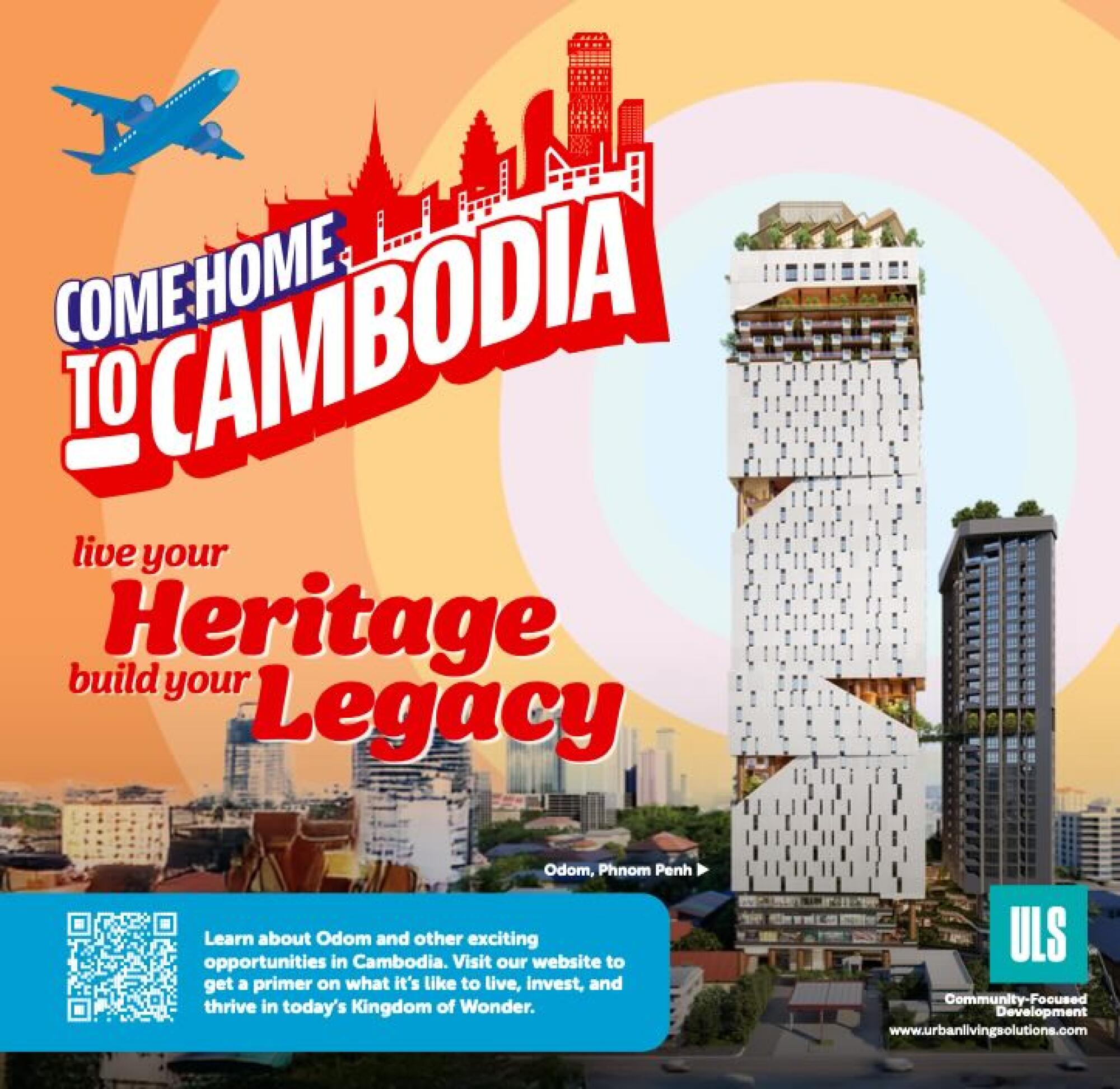
- Share via
With creative solutions and daring design aimed at truly improving people’s lives, Urban Living Solutions in redefining Cambodia’s housing landscape.
Founded in 2016, Urban Living Solutions has quickly established itself as an example to follow in Cambodia’s real estate sector by prioritizing the creation of community-focused, high-quality housing. Under the leadership of Leang Kean, the company is redefining what it means to live in a modern Cambodian city. “We don’t believe in façades,” says Kean. “We believe in usable spaces that bring people together.”
ULS embarked on its journey with four major projects in Phnom Penh, recognizing the rapid urbanization and the limited availability of modern and affordable living and working spaces for Cambodians. Urban Loft was the first project in 2017 and was quickly followed by the ground-breaking Urban Village Phase 1 in 2018, and Factory Phnom Penh, a multi-use creative workspace inside a former, 4-hectare garment factory.

ULS’s commitment to affordable housing is perhaps best exemplified by Bakong Village in Siem Reap. This walkable community was designed for the Cambodian middle-class (from hospitality managers to government employees) and offers affordable prices without compromising on quality. Designed by Swiss architect Martin Aerne, the project features two- and three-story buildings with centralized parking, encouraging residents to walk, meet, and interact. “When people say they don’t like to walk, it’s usually because they don’t have spaces that make walking enjoyable,” notes Kean. “Bakong Village is our attempt to change that, offering efficient, community-driven living for everyone.”
The next notable project in Siem Reap was Rose Apple Square which opened last year. This seven-floor condominium of 207 residential homes also incorporates co-living and co-working spaces. “We think the sharing economy is efficient, so we want to explore all forms of co-habiting,” says Kean. The development also includes a restaurant, a gym, a swimming pool, and even a small auditorium, all designed to foster a sense of community among both short and long-term residents.
In line with their efforts to rethink urban space with original solutions that foster a sense of community, ULS will bring Japan’s internationally renowned bookstore, Tsutaya, to Cambodia next year as the exclusive franchise holder in the country. Tsutaya is known for creating some of the most beautifully designed bookstores in the region, blending contemporary architecture with a highly curated selection of books, stationary, and local articles that act as popular third spaces. Bookshops are a rarity in Cambodia but are part of the company’s broader goal to create intentional communities that encourage connections between people and spaces.
“We are always thinking about how we can bring value to the people living in our developments, and this bookshop is a beautiful way to do so,” says Kean.
The bookshop will be one of the many features of their ongoing project Odom, ULS’s flagship mixed-use high-rise development on Norodom Boulevard, in the heart of Phnom Penh. Set to open in 2026, this ambitious project consists of Tower, Living, and Square, spaces designed to meet the growing demand for high-quality office spaces and housing that promote well-being. With 22 AI-powered elevators, cafes, and public spaces, moving through the tower for meeting and for work is seamless.
Adjacent to the tower is Odom Living, featuring 138 exclusive residences that offer stunning views of the Mekong River and Phnom Penh skyline. Spanning 8,000 square meters of green space, the development includes rooftop garden, six Sky Villages, and a community square that enhance the residents’ connection to nature. “Green spaces are key because they minimize adverse effects on the environment and the community,” notes Kean. Designed by Singapore’s award-winning Kite Studio Architecture, Odom reflects Khmer identity through indigenous materials like bricks and bamboo, offering a blend of modern smart design and traditional culture.
The Odom development is designed as a vertical village with shared green spaces every six floors, in which life, work, community, and play are weaved together. “We took on the challenge of building a high rise while maintaining human scale”, explains Kean, “and the result is this one-of-a-kind development in Cambodia.”

Come Home to Cambodia
In a sector in which developers have scarce access to bank loans, partnering with the right foreign investors is crucial for securing the creation of future developments. Apart from bringing capital, investors from countries with stricter legislation for investment encourage greater efficiency in Cambodia itself, fostering transparency and accountability. “We have much to gain from foreign investors, and they have much to gain from investing in Cambodia,” adds Kean.
A critical aspect of efforts to encourage new investment in Cambodia centers on dispelling common misconceptions among foreigners. “Many people don’t even know where we are,” Kean laments. “Those who have heard of Cambodia often associate us solely with the Khmer Rouge era or view us through the lens of exaggerated negative news online.”
To this purpose, ULS created the program “Come Home to Cambodia,” aimed at encouraging the Cambodian diaspora to return and invest in the country’s future, setting an example for international investors. “This is why I always say to people interested or curious about Cambodia: come and see it first”, concludes Kean with a smile, “and if you are interested in real estate, I will welcome you myself.”